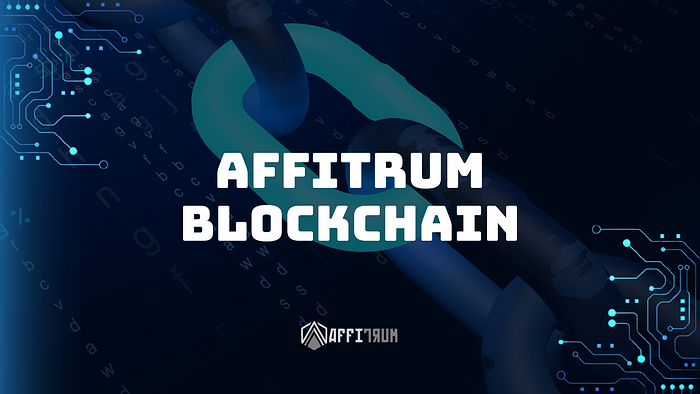Affitrum Blockchain. The Big Promise of a Bright Future for Digital Advertising

We advise anyone unfamiliar with blockchain, distributed ledgers, and cryptographically secured chains to read this piece. Learn about the major developments, obstacles, and openings in blockchain-based systems that could affect your business strategy this year.
Affitrum Blockchain: What It Is and How It Functions
Affitrum blockchain is a distributed digital ledger (also known as a “digital node”) that allows data to be replicated, synchronized, and shared across a network of multiple servers, computers, and users located in different parts of the world. The data is stored in a configuration that is similar to a chain, and within this configuration, the history of each transaction is bundled into ‘blocks.’ These ‘blocks’ can only be built upon; they cannot be altered or copied in any way. It is a peer-to-peer network in which members verify each other’s transactions and record them in a public and chronologically ordered ledger.
The blockchain network is opposite of the centralized financial systems that have a traditional consolidated repository of all client’s transaction data. The single owner of the database is extremely vulnerable because all the information is stored in one place, which makes it easy for cybercriminals to hack into. Using blockchain, you could say that data in a distributed ledger belongs to both everyone and no one. If someone attempted to hack the system, they would have to alter data for the vast majority of participants, which is nearly impossible given the number of users. The network is incorruptible because every participant in the blockchain keeps the digital ledger current.
Affitrum will leverage on blockchain as the underlying technology to record all advertising transactions securely and immutably. By utilizing a distributed ledger, the platform can ensure transparency, prevent data manipulation, and provide a verifiable audit trail of all advertising activities. This blockchain is capable of handling all ad settlements in Affitrum tokens between Publishers and Advertisers in the digital world. The Affitrum dPoS blockchain layer is used to transfer value between advertisers and publishers.
Is Blockchain Necessary for the Digital Ad Industry?
The digital advertising ecosystem consists of numerous interconnected parts, including demand-side platforms (DSPs), supply-side platforms (SSPs), ad exchanges, ad networks, data management platforms, ad servers, and agency trading desks. It’s difficult to guess how many supply and demand partners engage in daily transactions through Real-Time Bidding auctions. Let’s not overlook the importance of offline markets and direct trades. In total, that could amount to billions of transactions and millions of dollars being transferred each day.
Fees are paid by media purchasers and sellers to intermediaries, such as technology providers and middlemen. Costs associated with using a platform, providing a service, processing payments, and making a purchase add up quickly. That’s a huge chunk of money to spend on advertising. However, this isn’t all about the cash. Marketers and advertisers are worried about the programmatic partnerships collapsing due to a lack of trust, transparency issues, and rampant ad fraud.
There is an urgent need for answers to all of these problems. The AdTech industry stands to benefit greatly from the implementation of Affitrum Blockchain technology. Let’s take a look at a few of them.
Major Advantages of Affitrum Blockchain.
- Transparency. Every change made on the Affitrum blockchain ledger becomes public. It is verified, approved and seen by all members. Such openness of the network and peer support adds accountability and builds trust.
- Immutability. Once a blockchain node is created, its information cannot be changed backwards without also changing every block that came before it. This can happen if the majority of participants all make changes to the ledger at the same time. The majority of the users must sign off on a transaction before it can be added to the ledger.
- No third-party intermediaries. Digital and physical assets can be traded instantly thanks to blockchain-based transactions. As a result, partners can save money on transaction fees and counterparty risks are greatly mitigated or eliminated.
- Enhanced data quality. Blockchain data is consistent, complete, accurate, updated, verified and widely available.
- Distributed nature. Blockchain technology is implemented over a distributed network of computers. Digital information is saved on thousands of separate computers to ensure it is not lost in the event of a system failure or error. Since data is never stored in one central location, there is no need for data restoration or backup procedures in the event of data loss..
- Cybersecurity. Transactions in blockchain are associated with unique “keys” — strings of numbers that define the user and that user’s digital wallet. Cryptography is used to secure a user’s private key and offer full control of the identity and transaction history.
- Real-time transactions. Blockchain transactions allow for instant payments, whereas bank transactions can take two days or more. Money in bits. Bitcoin, the first cryptocurrency, is a good example of a practical application of blockchain technology because it is a decentralized, decentralized, and decentralized digital currency.
- Endless possibilities. With blockchain, users can create markets, store registries, move funds, keep records of immutable values such as currency, identity, trails of products and other data.
